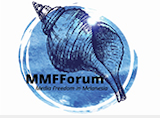In her own words: Melanesian women in media
Abstract
Representation of women in media has been a noted gender equity issue globally for decades. Given the increasing encroachments into press freedom in Melanesia, female journalists and media workers face serious challenges. With this in mind, the Melanesian Media Freedom Forum (MMFF) hosted a special session focusing specifically on the issues affecting women in the media in Melanesia. This article focuses on the discussions of female Melanesian journalists and the unique challenges they face in terms of representation in the media workforce, having their voices heard in the media, and the threats to their personal safety.
Downloads
Metrics
References
Blades, J. (2016). Watching this space, West Papua. Pacific Journalism Review: Te Koakoa, 22(1), 13-24. https://doi.org/10.24135/pjr.v22i1.10
Boseto, P. (2000). Melanesian women, mothers of democracy. In B. Douglas (Ed.), Women and governance from the grassroots in Melanesia (pp. 8-10). Canberra, ACT: Australian National University.
Cass, P. (2004). Media ownership in the Pacific: Inherited colonial commercial model but remarkably diverse. Pacific Journalism Review, 10(2), 82-110. https://doi.org/10.24135/pjr.v10i2.808
Cass, P. (2014) Press, Politics and People in Papua New Guinea 1950-75. Auckland, NZ. Unitec e-press.
Ellsberg, M., Bradley, C., Egan, A., & Haddad, A. (2008). Violence against women in Melanesia and East Timor: Building on global and regional promising approaches. Canberra, ACT: AusAID.
Knauft, B. M. (1997). Gender identity, political economy and modernity in Melanesia and Amazonia. Journal of the Royal Anthropological Institute, 233-259.
Laumaea, S. (2010). PNG: Threats to Media Freedom and FOI. Pacific Journalism Review, 16(2), 30-36. https://doi.org/10.24135/pjr.v16i2.1030
Layton, S. (1995). The demographics of diversity: Profile of Pacific Island journalists. Australian Studies in Journalism, (4), 103-128.
Mago-King, P. M. J. (2019). Violence against women in Papua New Guinea: The representation of women in anti-violence campaigns. Unpublished doctoral dissertation, Pacific Media Centre, Auckland University of Technology. Retrieved from https://openrepository.aut.ac.nz/bitstream/handle/10292/12777/MagoKingP.pdf
Mantovani, E. (1993) Male-female relationships in Melanesia—a pastoral reflection with particular reference to domestic violence. Goroka: Melanesian Institute, Occasional Paper No. 8.
North, L. (2010). The gender ‘problem’ in Australia journalism education. Available at SSRN 2015844.
Onyeke, D. (2010). Real men don’t hit women: The virtue of respect as a strategy for reducing gender-based violence in Papua New Guinea. Contemporary PNG Studies, 13, 1.
Perrottet, A., & Robie, D. (2011). Papua a media black spot. New Matilda. October 23. Retrieved from https://newmatilda.com/2011/10/23/papua-media-black-spot/
Robie, D. (2008). Frontline reporting, ethos and perception: Media challenges in the South Pacific. Asia Pacific Viewpoint, 49(2), 213-227. https://doi.org/10.1111/j.1467-8373.2008.00371.x
Robie, D. (2018). Journalism under duress in Asia-Pacific: A decade of resistance: The Pacific Media Centre, Pacific Media Watch, impunity and human rights. Pacific Journalism Review, 24(2), 12-32. https://doi.org/10.24135/pjr.v24i2.459
Singh, S. (2017). State of the media review in four Melanesian countries—Fiji, Papua New Guinea, Solomon Islands and Vanuatu—in 2015. SSGM DISCUSSION PAPER 2017/1. Canberra, ACT: ANU
Soin, K. (1998). Why women, what politics. Transforming politics: Women’s experiences from the Asia-Pacific region. Quezon City, Philippines: Centre for Asia-Pacific Women in Politics.
Solomon, A. (1994). Women in the media. Pacific Journalism Review, 1(1), 23-29. https://doi.org/10.24135/pjr.v1i1.517
Spark, C., & Corbett, J. (2018). Emerging women leaders’ views on political participation in Melanesia. International Feminist Journal of Politics, 20(2), 221-235.
Strathern, M. (1988). The gender of the gift: problems with women and problems with society in Melanesia (No. 6). University of California Press.
Tacchi, J., Horst, H., Papoutsaki, E., Thomas, V., & Eggins, J. (2013). PACMAS: state of media and communication report. Pacific Media and Communication Research Consortium.
UN General Assembly. (1948). Universal declaration of human rights. UN General Assembly, 302(2).
Yang, Y., Chawla, N. V., & Uzzi, B. (2019). A network’s gender composition and communication pattern predict women’s leadership success. Proceedings of the National Academy of Sciences, 116(6), 2033-2038.
Zimmer-Tamakoshi, L. (2012). Troubled masculinities and gender violence in Melanesia. Engendering violence in Papua New Guinea, 73-106.

Copyright (c) 2020 Faith Valencia-Forrester

This work is licensed under a Creative Commons Attribution-NonCommercial 4.0 International License.















